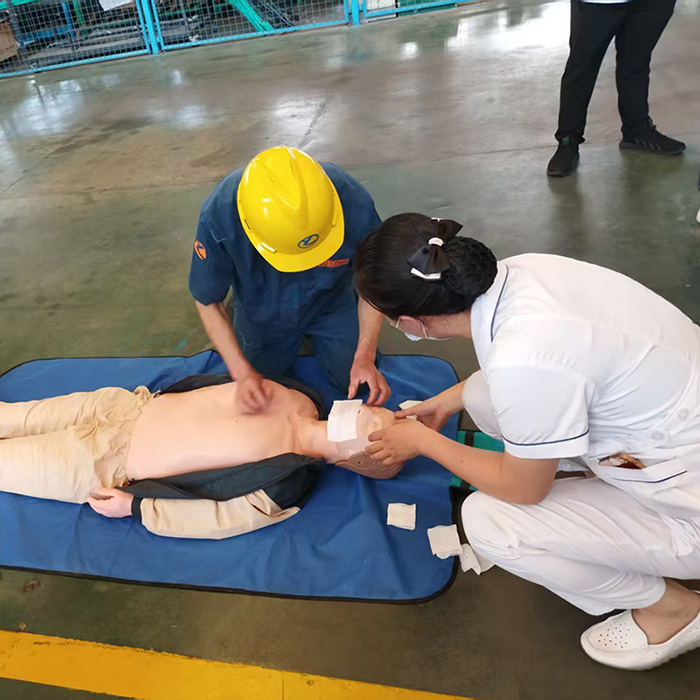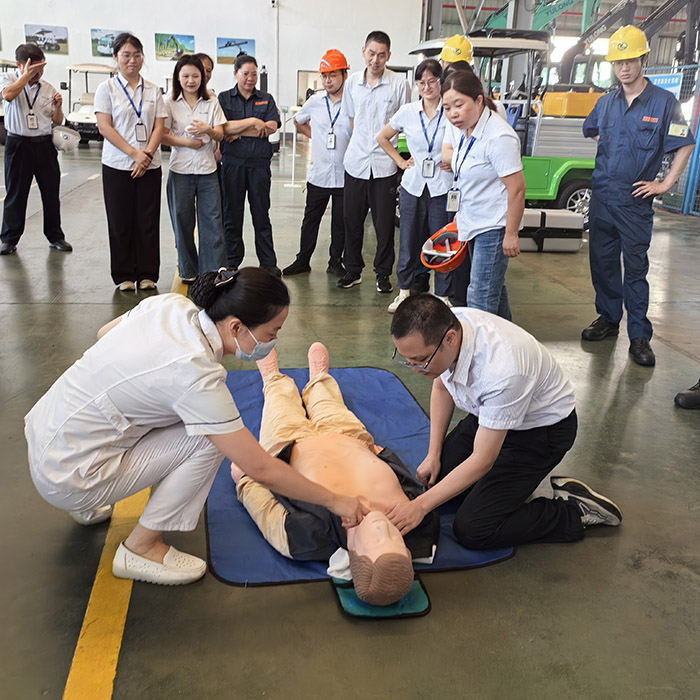CPR (Cardiopulmonary Resuscitation) is a life-saving technique used in emergencies when someone's heartbeat or breathing has stopped — such as in cardiac arrest, drowning, or choking.
What CPR Does:
Keeps blood and oxygen circulating to vital organs until normal heart function can be restored.
Can double or triple a person’s chance of survival in cardiac arrest.

What CPR Does:
eeps blood and oxygen circulating to vital organs until normal heart function can be restored.
Can double or triple a person’s chance of survival in cardiac arrest.

Basic Steps of CPR (for Adults)
1. Check Responsiveness & Breathing
2. Call for Help / Get AED
3. Start Chest Compressions
4. Rescue Breaths (Optional if Trained)
5. Use of AED (if available)
CPR (Cardiopulmonary Resuscitation) training is essential for anyone who wants to be prepared to help in an emergency situation where someone's heart stops beating or they're not breathing. It's a life-saving technique that can buy crucial time until professional medical help arrives. CPR training covers both adults and infants, and the procedures vary slightly based on age and the situation.
Here's a basic outline of what CPR training generally includes:
1. CPR Basics
Check the Scene: Ensure it's safe for you to approach the person.
Check for Responsiveness: Gently tap or shake the person and shout to see if they respond.
Call for Help: If there's no response, call 911 or have someone else do it immediately.
Chest Compressions:
Kneel next to the person, place your hands on the center of the chest, and press down hard and fast—about 2 inches deep and at a rate of 100-120 compressions per minute.
Allow the chest to fully recoil between compressions.
Rescue Breaths (optional in some cases): After every 30 chest compressions, give 2 rescue breaths if you're trained to do so and the person isn't breathing on their own.
2. Defibrillation (AED):
If there's an AED (Automated External Defibrillator) nearby, use it as soon as possible. The AED will give you voice instructions, so just follow them carefully.
3. Infant CPR (for children under 1 year old):
The steps are similar but use two fingers for chest compressions and less force.
For rescue breaths, cover the infant’s nose and mouth with your mouth.
Things to Remember:
If you're not trained in giving rescue breaths, just focus on chest compressions. Compression-only CPR has been shown to be very effective in improving survival rates.
You don't have to worry about doing it perfectly—doing something is better than doing nothing. Even if you're unsure, your actions can make a huge difference.
Take a class: While these basics can help in an emergency, hands-on practice in a CPR course is the best way to build confidence and skill.
Things to Remember:
If you're not trained in giving rescue breaths, just focus on chest compressions. Compression-only CPR has been shown to be very effective in improving survival rates.
You don't have to worry about doing it perfectly—doing something is better than doing nothing. Even if you're unsure, your actions can make a huge difference.
Take a class: While these basics can help in an emergency, hands-on practice in a CPR course is the best way to build confidence and skill.

